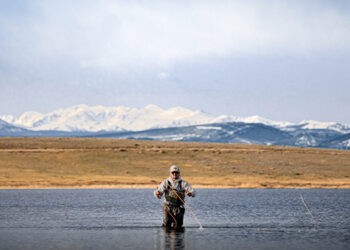Activities based on swimming are extremely beneficial. Students are catching onto this, from those who want a unique way to get in shape to those who just enjoy being in water.
“We look to provide aquatic programs for people who have all sorts of interests in aquatics,” said Lisa Hedlund, the facilities and aquatics coordinator at the University of Central Florida (UCF).
UCF’s programs appeal to a wide variety of skillsets, from private swim lessons for beginners to lifeguard certification classes. They also use their facilities for swim meets, water polo tournaments and triathlon training.
At the University of Colorado, aquatics programming plays an important role in student engagement on campus. Like UCF, Colorado’s recreation department has two different pools for people to use: a “lap” pool and a leisure pool. Colorado also offers three different levels of adult swim classes, depending on individual ability, as well as yoga and group exercise classes for its students.
However, there’s a fine line for whether a program is beneficial or not. “The general rule of thumb is to give a program three semesters to assess participation and make decisions at that time,” said Barbara Bogner, the aquatics and ice arena assistant director at the University of Colorado.
Another method is to feel the pulse of your participants, finding out what students and faculty find the most engaging and constructive. “We like to see what it is about the experience they’re enjoying and what they’d like to see be a little different,” said Hedlund. “Especially when we’ve run an event for multiple years, we’re always looking to offer it in a different form or see what students are wanting now as opposed to three to five years ago.”
Relevant programming can be a driving factor in student engagement. But how do you develop this programming?
“By asking the student employees, student club participants and regulars, ‘What do you want?’” explained Bogner. “Listen to what they are saying — it is very easy to be accommodating and give them exactly the tweak they are looking for in the regular program.”
On both campuses, aquatics programming has been an effective way to drive student engagement in not only the aquatics department, but the entire recreation department. “As a whole, we are seeing more people enter the facility and try new activities,” explained Bogner. “It’s not just about swimming laps or aqua classes, it is about the social and leisure activities that promote a healthy environment for people to be themselves and enjoy the facilities.”
But at the end of the day, the best way to keep high student participation is to constantly evolve, staying on the cutting edge of engaging programming. “Continually assess and look out for those new trends, because it’s easy to get stuck in the ways of what was successful once or what is traditional,” said Hedlund. “There are plenty of ways to offer programs that will serve the needs of your student population best, and that can change very quickly from semester to semester.”










